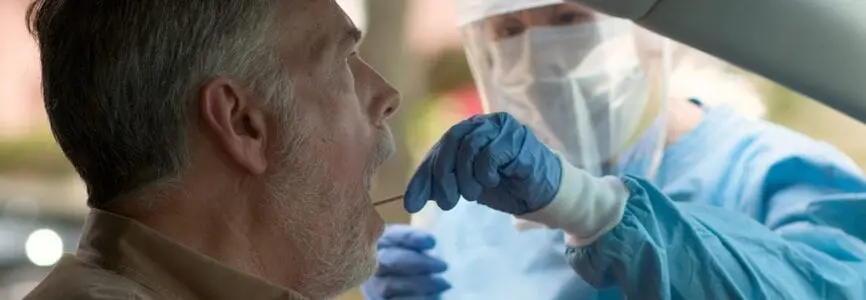Scarcity in the Covid-19 Pandemic
by Mildred Z. Solomon, Matthew Wynia, and Lawrence O. Gostin
[This article appears in the Hastings Center Report, March-April 2020]
As we write, cities and states with extensive community transmission of Covid-19 are in harm’s way in the United States—not only because of the disease itself but also because of prior and current failures to act. During the 2009 influenza pandemic, public health agencies and hospitals developed but never adequately implemented preparedness plans. Focused on efficiency in a competitive market, health systems had few incentives to maintain stockpiles of essential medical equipment, including personal protective equipment and ventilators. Just-in-time economic models resulted in storage of only those supplies needed then. At the same time, global purchasing in search of lower prices reduced the number of U.S. suppliers, with hospitals dependent on foreign companies.
According to widespread reporting, there is a shortfall of 3.5 billion N95 masks, but the U.S. Strategic National Stockpile contains just 12 million. Approximately 2 percent of all Covid-19 patients may require ventilators, often for weeks, but given the current supply, according to a New England Journal of Medicine essay by Robert Truog and colleagues, there could be but one ventilator for every thirty patients in need. There are about ninety-five thousand intensive care unit beds in the United States, but most are already occupied, and models developed by the Institute for Health Metrics and Evaluation suggest that up to seventy thousand Covid-19 patients could require ICU care during the pandemic’s peak—and these new patients presumably will not be perfectly distributed where the empty beds are.
There is still a possibility that the pandemic will be manageably bad rather than unmanageably catastrophic in this country. Immediate, powerful, and sustained federal action could make the difference. The federal government has taken some important steps, including passage of a 2-trillion-dollar economic stimulus, the movement of naval ships to provide additional beds for hotspots in Los Angeles and New York City, and activation of the Defense Production Act, which allows the government to enlist or incentivize private companies to produce material needed in a crisis. More is needed, however.
President Trump has so far used this act only sparingly—directing one car manufacturer to produce ventilators. The federal government should go much further, bringing about a surge in the manufacturing of essential medical supplies via a combination of directives, subsidies, and loan guarantees to incentivize the private sector to ramp up or shift to production of these supplies.
Temporary price controls will likely be necessary. While competitive markets are often innovative and efficient, there is a high risk of price gouging if governors and hospital administrators must bid for supplies on the open market. The New York Times has reported that New York, for example, recently paid four dollars each for N95 masks that usually cost eighty cents.
Working closely with state and local public health departments, and perhaps with private technology companies, the federal government could establish a national database showing where there is surplus equipment that can be moved to under-resourced areas.
Swift action is also needed to ensure the production of the diagnostic tests and antibody screens needed to track the epidemic. Rapid regulatory approval, consistent with safety, will be needed for new ways of producing medical equipment, such as ventilator parts made by 3D printers.
The federal government also has a role to play in ensuring that the health care workforce can take on the pandemic. Lacking appropriate protective equipment, health workers are becoming sick and unable to work. To expand the health care workforce, the government could call on professional societies and perhaps non-health care industries, like the airline industry, to develop and deploy training programs on managing ventilators or conducting contact tracing, creating a pool of emergency health workers from students, retirees, and laid-off employees of industries hit hard by the pandemic’s economic fallout.
Finally, the government must reach out to work in partnership with other countries during this worldwide public health emergency. The United States should collaborate with the World Health Organization to provide data on country-specific needs, evidence-based guidance, and a well-funded and coordinated plan to reduce health system scarcity by moving resources where they are most needed. When effective antivirals and vaccines are developed, plans should be in place for their equitable distribution to low- and middle-income countries, where the effects are likely to be the worst. Our plans must reflect our commitment to justice—and our global interdependence—in this time of crisis.
Mildred Z. Solomon is president of The Hastings Center.
Matthew Wynia, MD, MPH, is a professor of medicine and director of the Center for Bioethics and Humanities at the University of Colorado, Anschultz Medical Campus.
Lawrence O. Gostin is the O’Neill chair in global health law and the director of the World Health Organization Center on Global Health Law at Georgetown University.
For additional information and ethics resources on the Coronavirus, please visit our COVID-19 Ethics Resources page:
https://www.thehastingscenter.org/ethics-resources-on-the-coronavirus/

